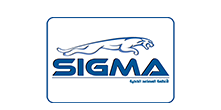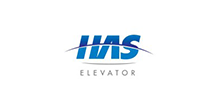كبائن أسانسيرات
تُعد كبائن أسانسيرات الهياكل الداخلية مصاعد التي تحمل
المسافرين والبضائع أثناء عملية التنقل داخل المباني المرتفعة. تعتبر الكبائن أساسية
لوظيفة اسانسير، حيث تُمثل البيئة التي يتم من خلالها نقل الأشخاص أو البضائع بين
مختلف الطوابق والأدوار في المبنى.
تُعد كبائن مصعد أيضًا مساحة تصميمية تُسهم في تحسين تجربة المستخدمين أثناء استخدام الأسانسير. فتصميمها الداخلي والخارجي يتم مراعاة الجوانب الجمالية والوظيفية لتوفير تجربة مريحة ومميزة للمستخدمين، إضافة إلى تطبيق أعلى معايير السلامة والأمان لضمان رحلة آمنة وموثوقة في كل استخدام.

تكوين وبنية كبائن أسانسيرات الحديثة
تعتبر كبائن الاسناسير الحديثة من بين أبرز الابتكارات التكنولوجية
والهندسية في مجال النقل العام والتنقل داخل المباني المرتفعة. تُصمم هذه الكبائن بعناية
فائقة لتلبية احتياجات المستخدمين وتحسين تجربتهم، بالإضافة إلى الالتزام بأعلى معايير
الأمان والأداء. وتتكوَّن الكبائن الحديثة من عدة عناصر أساسية، منها:
· المواد المتطورة: تُصنع كبائن الاسانسير الحديثة عادة من
مواد ذات جودة عالية ومتينة، مثل الفولاذ المقاوم للصدأ والزجاج المقوى والألمنيوم
والخشب المقاوم للماء والعوامل الجوية. تستخدم هذه المواد لضمان قوة الهيكل ومقاومته
للتآكل والاهتراء، مما يضمن عمراً طويلاً للكبائن وتحملها للاستخدام اليومي الشديد.
· الأبواب الذكية: تحتوي الكبائن الحديثة على أبواب ذكية وآمنة
تفتح وتغلق تلقائيًا عند وصول المصعد للطابق المطلوب. تُعتبر هذه الأبواب أحد العوامل
الرئيسية للأمان والحماية داخل الأسانسير. (اسعار الاسانسير في مصر 2021)
· التهوية والإضاءة: يُعطى اهتمام كبير لتوفير التهوية المناسبة
داخل الكبائن، إضافة إلى توفير إضاءة كافية ومناسبة لضمان رؤية جيدة أثناء استخدام
الأسانسير، كما يُفضل استخدام التكنولوجيا LED لتوفير الطاقة وتقليل استهلاك
الكهرباء. (أسعار المصاعد الصغيرة في مصر 2021)
· نظام التحكم والتشغيل: تحتوي الكبائن الحديثة على نظام تحكم
ذكي يدير عمليات الصعود والنزول بشكل سلس ومنسق، ويُمكن التحكم بهذا النظام بسهولة
عن طريق لوحة التحكم في الكابينة أو عن طريق الأجهزة الرقمية الموجودة في البهو. (اسعار المصاعد الصغيرة في مصر 2022)
· التصميم الداخلي: تصمم كبائن أسانسيرات الحديثة بأسلوب عصري
وأنيق يتناسب مع مظهر المبنى والأماكن المحيطة به. يتم التركيز على استخدام ألوان ومواد
جذابة لتجربة مريحة ومميزة للمستخدمين أثناء رحلتهم داخل الأسانسير. (اسعار مواتير المصاعد الايطاليه في مصر)
تُعتبر كبائن أسانسيرات الحديثة نمطًا هندسيًا وتكنولوجيًا
رائدًا، حيث تجمع بين الأداء العالي والتصميم المبتكر لتوفير أفضل تجربة نقل داخلي
وسلامة عالية للمستخدمين في المباني المختلفة. (أصانصير)
أهمية التصميم الجيد لكبائن أسانسيرات
يعد التصميم الجيد لكبائن أسانسيرات أمرًا حيويًا وضروريًا
لعدة أسباب، حيث يلعب دورًا محوريًا في تحسين أداء الأسانسير وتجربة المستخدم أثناء
الانتقال داخل المبنى. إليكم بعض الأسباب التي تبرز أهمية التصميم الجيد لكبائن الأسانسيرات: (اسعار مواتير المصاعد)
· راحة المستخدمين: يُعد تجربة المستخدم أثناء استخدام المصعد مهمة جدًا. يؤثر التصميم الجيد للكبائن في توفير راحة أكبر للمستخدمين أثناء الرحلة. فتصميم الداخلية الجذابة والفسيحة والمضيافة يجعل الركاب يشعرون بالارتياح والاسترخاء أثناء استخدام الأسانسير. (سعر متر واير الاسانسير في مصر)
· الأمان والسلامة: يلعب التصميم الجيد دورًا هامًا في تحسين
مستوى السلامة داخل الكبائن. يُمكن للتصميم الذكي أن يساهم في تجنب الحوادث والازدحام
وضمان وصول المستخدمين بأمان إلى وجهتهم المطلوبة. (سعر متر الواير للمصاعد)
· تحسين كفاءة الاستخدام: بفضل التصميم المبتكر، يُمكن تحسين
كفاءة استخدام الأسانسير من حيث الوقت والطاقة. يُمكن استخدام تصاميم تحافظ على التوازن
بين الحمولة القصوى واستهلاك الطاقة لتحسين كفاءة تشغيل الأسانسير. (اسعار ماكينات المصاعد الايطاليه)
· الاستدامة وتوفير الطاقة: يُمكن تكييف تصميم الكبائن لتحسين الاستدامة وتوفير الطاقة. يُمكن استخدام مواد صديقة للبيئة وتقنيات إضاءة ذكية لتقليل استهلاك الطاقة وتقليل تأثير اسانسير على البيئة. (سعر كارت الاسانسير)
· الاعتبارات الهندسية والوظيفية: يتطلب تصميم كبائن أسانسيرات
مراعاة الاعتبارات الهندسية والوظيفية الدقيقة. يجب أن تكون الكبائن ملائمة للمساحات
المحدودة والأبعاد المحددة، وأن تتوافق مع معايير السلامة والبنية التحتية للأسانسير. (ريموت الاسانسير)
باختصار، يساهم التصميم الجيد لكبائن أسانسيرات في تحسين جودة التجربة والأمان للمستخدمين ويمكن أن يؤدي إلى تحسين كفاءة الاستخدام وتحقيق التوازن بين الأداء والاستدامة. لذلك، يُعتبر التصميم الجيد لكبائن أسانسيرات عاملًا أساسيًا في جعل هذه الوسيلة الحيوية للنقل أكثر فاعلية وفعالية. (اسانسير مستعمل للبيع)
استخدام التكنولوجيا في تصنيع كبائن أسانسيرات
يعتبر قطاع صناعة الأسانسيرات وتصنيع كبائنها من أكثر القطاعات
التي استفادت من التطور التكنولوجي في العقود الماضية. تقدم التكنولوجيا المتطورة فرصًا
هائلة لتحسين التصميم وجودة الكبائن بطرق لم تكن متاحة في السابق. وفيما يلي بعض الطرق
التي يتم فيها استخدام التكنولوجيا في تصنيع كبائن أسانسيرات: (ريموت اسانسير)
· تصميم بمساعدة الحاسوب (CAD):
يعتبر استخدام البرمجيات الحاسوبية المتقدمة لتصميم الكبائن أحد أهم الاستخدامات التكنولوجية.
تمكن أنظمة التصميم بمساعدة الحاسوب (CAD) المهندسين والمصممين
من إنشاء نماذج ثلاثية الأبعاد دقيقة وواقعية للكبائن، مما يساهم في توفير الوقت والموارد
ويسمح بالتحكم الكامل في التفاصيل.
· الطابعات ثلاثية الأبعاد: استخدام الطابعات ثلاثية الأبعاد
يمكن أن يكون مفيدًا في تصنيع بعض العناصر الداخلية للكبائن بطريقة دقيقة وسريعة. يمكن
استخدام تلك الطابعات لإنتاج أجزاء صغيرة أو تفاصيل تزيد من تجربة المستخدم أو العناصر
الزخرفية المميزة.
· المواد المبتكرة: تسهم التقنيات الحديثة في استخدام مواد
جديدة ومبتكرة في تصنيع كبائن أسانسيرات. فمثلاً، يُمكن استخدام الزجاج المقوى لإنشاء
جدران زجاجية فسيحة تمنح الركاب إطلالات رائعة عند الصعود والنزول، وتُعزز من شعورهم
بالأمان والراحة.
· التكنولوجيا الذكية: يُمكن دمج التكنولوجيا الذكية داخل الكبائن
لتحسين تجربة المستخدم. على سبيل المثال، يمكن تزويد الكبائن بشاشات تعمل باللمس لعرض
المعلومات والأخبار أو حتى الإعلانات. كما يمكن إضافة أنظمة صوتية متطورة أو ميزات
التحكم الصوتي لتسهيل استخدام الاسانسير.
· التحسينات في الإضاءة والتهوية: تستفيد التكنولوجيا في تحسين
نظام الإضاءة والتهوية داخل الكبائن، مما يُضفي جوًا أكثر إشراقًا وراحة على الركاب
أثناء رحلتهم.
تُعد التكنولوجيا جزءًا حيويًا من تطوير صناعة كبائن أسانسيرات،
حيث تسهم في تحسين الأداء والجودة وتعزز التجربة العامة للمستخدمين. باستمرار تقدم
التكنولوجيا، من المتوقع أن يتم تحسين كبائن الأسانسيرات بشكل مستمر وتوفير ميزات جديدة
تلبي احتياجات المستخدمين المتزايدة.
تأثير تصميم الكبائن على تجربة الركاب ذوي الاحتياجات الخاصة
تمثل تجربة ركاب الأسانسير ذوي الاحتياجات الخاصة تحدٍ هام
يواجههم عند استخدام الكبائن. يعتبر تصميم الكبائن الذكي والشامل للجميع أمرًا أساسيًا
لتلبية احتياجات هذه الفئة من الركاب، وتمكينهم من الانتقال بكل راحة وسهولة داخل المباني
المرتفعة. إليكم بعض النقاط التي تسلط الضوء على تأثير تصميم الكبائن على تجربة الركاب
ذوي الاحتياجات الخاصة:
الوصولية والتنقل السهل: يعد الوصول إلى الكبائن والتنقل
بسهولة من بين أهم التحديات التي تواجه ركاب الأسانسير ذوي الاحتياجات الخاصة. يجب
أن يتم تصميم الكبائن بحيث تكون مدخلاتها ومخارجها مريحة وسهلة الوصول للأشخاص ذوي
الاحتياجات الخاصة، مثل الكراسي المتحركة أو العكازات.
مساحة الكبينة: يُفضل أن تكون الكبائن الكبيرة بما يكفي للسماح
بحركة سهلة ومريحة لركاب ذوي الاحتياجات الخاصة ومساعديهم داخل الكبينة. يجب أن تكون
هذه الكبائن واسعة بما يكفي للسماح للركاب بالدوران والتحرك بحرية دون تعرضهم للإزعاج.
الأبواب الذكية: يُفضل أن تكون ابواب اسنسير في الكبائن ذكية وآلية
لفتحها وإغلاقها بشكل آلي، وذلك لتجنب الحاجة إلى جهد يدوي لفتح وإغلاق الأبواب، مما
يُسهل على الركاب ذوي الاحتياجات الخاصة دخول وخروج الكبينة بدون عوائق.
الإعلام المرئي والصوتي: يمكن أن يكون للشاشات الإعلامية
المرئية وأنظمة الصوت التوجيهي تأثير كبير على تجربة ركاب الأسانسير ذوي الاحتياجات
الخاصة. يُمكن استخدام الإعلام المرئي لعرض معلومات مفيدة عن الطابق الحالي والمقصود،
ويُمكن أن يُقدم الإعلام الصوتي إرشادات صوتية للمساعدة في استخدام الأسانسير بسهولة.
الإضاءة الجيدة: يلعب الإضاءة دورًا هامًا في تحسين تجربة
الركاب ذوي الاحتياجات الخاصة. يجب أن تكون الكبائن مُنيرة بشكل جيد وأن تُسهل رؤية
الأشخاص ذوي الاحتياجات الخاصة والتحرك بأمان داخل الكبينة.
تصميم كبائن أسانسيرات بشكل متكامل وذكي يعكس الالتزام بتلبية احتياجات جميع الركاب، بما في ذلك ذوي الاحتياجات الخاصة، وتوفير تجربة مريحة وسهلة للجميع أثناء الانتقال داخل المباني المرتفعة.
لمعرفة المزيد : شركة للمصاعد والأسانسيرات في مصر



















